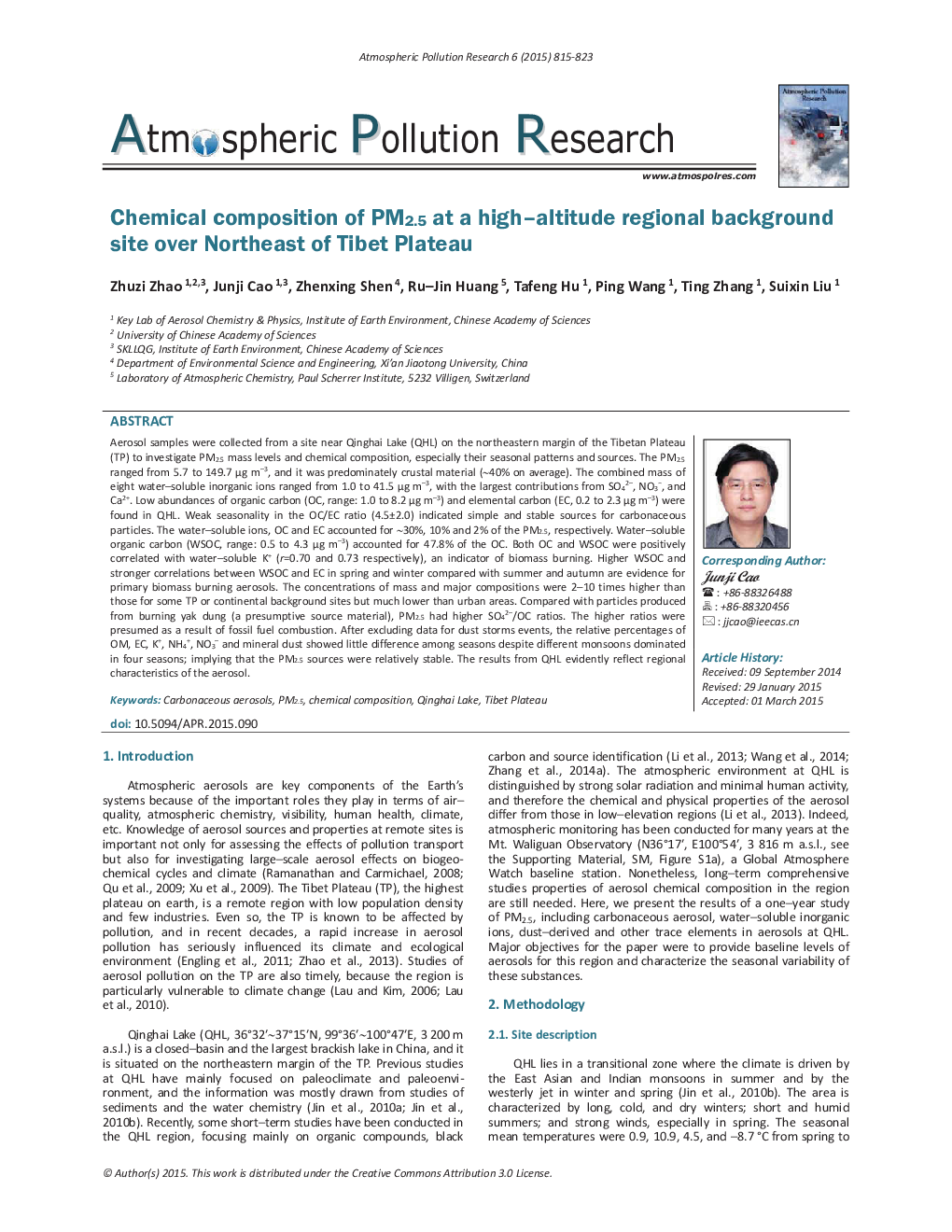| کد مقاله | کد نشریه | سال انتشار | مقاله انگلیسی | نسخه تمام متن |
|---|---|---|---|---|
| 4434759 | 1310525 | 2015 | 9 صفحه PDF | دانلود رایگان |

Aerosol samples were collected from a site near Qinghai Lake (QHL) on the northeastern margin of the Tibetan Plateau (TP) to investigate PM2.5 mass levels and chemical composition, especially their seasonal patterns and sources. The PM2.5 ranged from 5.7 to 149.7 μg m–3, and it was predominately crustal material (-40% on average). The combined mass of eight water–soluble inorganic ions ranged from 1.0 to 41.5 μg m–3, with the largest contributions from SO42– NO3-, and Ca2+. Low abundances of organic carbon (OC, range: 1.0 to 8.2 μg m–3) and elemental carbon (EC, 0.2 to 2.3 μg m–3) were found in QHL. Weak seasonality in the OC/EC ratio (4.5±2.0) indicated simple and stable sources for carbonaceous particles. The water–soluble ions, OC and EC accounted for ~30%, 10% and 2% of the PM2.5, respectively. Water–soluble organic carbon (WSOC, range: 0.5 to 4.3 μg m–3) accounted for 47.8% of the OC. Both OC and WSOC were positively correlated with water–soluble K+(r=0.70 and 0.73 respectively), an indicator of biomass burning. Higher WSOC and stronger correlations between WSOC and EC in spring and winter compared with summer and autumn are evidence for primary biomass burning aerosols. The concentrations of mass and major compositions were 2–10 times higher than those for some TP or continental background sites but much lower than urban areas. Compared with particles produced from burning yak dung (a presumptive source material), PM2.5 had higher SO42–/OC ratios. The higher ratios were presumed as a result of fossil fuel combustion. After excluding data for dust storms events, the relative percentages of OM, EC, K+, NH4+, NO3– and mineral dust showed little difference among seasons despite different monsoons dominated in four seasons; implying that the PM2.5 sources were relatively stable. The results from QHL evidently reflect regional cha racteristics of the aerosol.
Journal: Atmospheric Pollution Research - Volume 6, Issue 5, September 2015, Pages 815–823